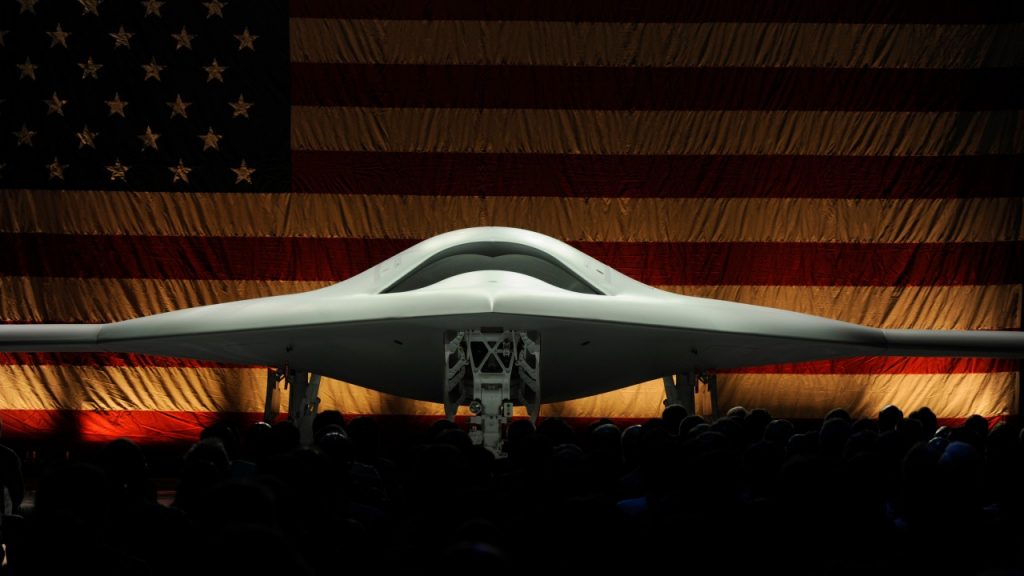To most observers of history, as well as the current state of geopolitics, the use of nuclear weapons by the U.S. in the past and the current increase in the use of automated warfare by countries all over the world top their list of concerns. Now, it is being reported that it’s only a matter of time before these two weapons form a frightening bond with the introduction of nuclear drone warfare.
There has been an ongoing global drone arms race, as nation after nation invests in autonomous technology to keep up with the latest developments from their rivals. The U.S. has announced that this path will lead toward a reality where ALL nations will have armed drones within 10 years.
This arms race has naturally spurred new technology to counter what is expected from adversaries such as laser-equipped autonomous drones, which are expected to arrive within two years. From there, anti-drone jamming technology has been introduced via the spectrum of electronic warfare. And even drone invisibility cloaks are rapidly approaching reality.
All of this development has been a boon for defense contractors who are excited by the prospect that the battlefield drone market is set to at least double by the year 2024. The U.S. is currently thought to be attempting to corner this massive market with the recent signing of the “Joint Declaration for the Export and Subsequent of Armed or Strike-Enabled Unmanned Aerial Vehicles,” where 40 nations are coming together under the guidance of the U.S. to establish standards of drone import, export and use.
[A]s former Pentagon official Michael Horowitz told Defense News in August, is a good way for the United States to “shape” drone policy around the planet.
“One of the best tools the US has to shape how countries use drones, ironically, is to export drones to them, given the ability of the US to leverage arms export rules to shape how other countries use technology,” he said. “Especially if the US increasingly views drone proliferation as inevitable, the Obama administration likely views rules of the road as critical to ensure that the rest of the world uses drones responsibly.”Horowitz added the declaration provides “a clear statement of US principles” and could be used “to influence the behavior of other states over time.”
(Source)
Of course, there are two notable holdouts from this agreement: Russia and China, which from the U.S. point of view undoubtedly will draw the line between compliant and “rogue” nations.
So one is forced to wonder where all of this is expected to lead.
As Asia Times reports (emphasis and italicized parenthetical comments added),
Now military strategists are considering acquiring longer-range drones, especially those capable of carrying out nuclear missions. In 2015 there were reports that Russia was attempting to build nuclear-armed drone submarines. (This reference to submarines is significant, as the U.S. previously announced that it would explore the possibility of sending its own drone submarines into the highly disputed South China Sea.)
It is a controversial strategy, given that it takes all the usual qualms there are about the increasing use of autonomous systems for war-fighting – the ethics of devolving too much authority to what are basically robots, susceptibility to hacking, etc. – but with much greater destructive power, given these systems’ range and payload. Nevertheless, it is at least worth considering. (Please see DARPA’s own admission about hacking concerns for all weapons systems here.)
…
Conventional strike missions with precision-guided air-to-ground munitions is also something that could be considered for an unmanned system, as it would provide the US with the means for long-range, large-payload ground attacks. These types of missions can presently be carried out only by B-52 and B-1 bombers, which are becoming increasingly obsolete; shorter-range systems such as the F-35 Joint Strike Fighter, area very limited in their capacities for ground attack.
In such a role, an unmanned LRS-B could probably pack quite a lethal load and avoid putting a manned crew in harm’s way.
This Book Could Save Your Life (Ad)
More controversial, perhaps, is the idea of an unmanned version of the LRS-B delivering nuclear weapons. Of course, the US military already operates a number of unmanned nuclear-delivery systems; they are called ballistic missiles (think of them as a single-mission, one-way drone).
…
And nuclear drones could come in smaller packages, too. Thus far there have been limitations on the transportability by air of nuclear bombs with relatively high yields.
…
Additive manufacturing – where 3-D printing machines can build objects of any shape and size by laying down successive layers of material – brings new opportunities for building much more lightweight structures.
…
More lightweight nuclear weapons present new deployment and delivery opportunities. They could be much more furtive and more difficult to detect; they could be carried by small drones and therefore be much harder to detect by enemy air defenses, since an adversary would normally be expecting a ballistic or cruise missile, or a bomber.
Longer-range drones make a lot of sense for the US military, when it comes to projecting power into the far Western Pacific. It still suffers from the centuries-old challenge of the “tyranny of distance.” It can take up to three weeks for US naval forces to steam from ports on the west coast to the South China Sea. Forces based in Hawaii could take up to 16 days to reach this area, and even Guam is a 3- to 5-day journey away. Considering this strategic straight jacket, drones make a lot of sense.
A nuclear-armed UAV may not be on the horizon any time soon, but it is a certainty that longer-range armed drones are coming, and perhaps sooner than we think. The promise of such a system, and the strike options it offers, are going to be just too irresistible to pass up.
Especially for the US military, which is seeking so-called “third offsets” capabilities in order to redress its growing vulnerability to long-range strike by such potential adversaries like China, a strategic drone would probably be quite appealing.
Just as we witnessed with the creation of nuclear weapons, sometimes merely having them is not enough; demonstrating the willingness to use them is understood by some as the ultimate deterrent.
These new weapons of war are being created as we experience further deterioration in relations between Russia and the U.S. regarding Syria. Both sides are stepping up their public statements about what could happen if neither side blinks.
 Russia has undertaken a massive 40 million person emergency drill to prepare its citizens for nuclear or chemical warfare. Meanwhile, the U.S. Air Force has dropped dummy nukes in the Nevada desert as part of its intention to upgrade its conventional capabilities. And this month, the largest unmanned vehicle drill ever is taking place off the Scottish Coast with the Allied Powers coordinating new systems between sea, land, and air labeled Unmanned Warrior 2016.
Russia has undertaken a massive 40 million person emergency drill to prepare its citizens for nuclear or chemical warfare. Meanwhile, the U.S. Air Force has dropped dummy nukes in the Nevada desert as part of its intention to upgrade its conventional capabilities. And this month, the largest unmanned vehicle drill ever is taking place off the Scottish Coast with the Allied Powers coordinating new systems between sea, land, and air labeled Unmanned Warrior 2016.
Clearly, we are living in precarious times, so it should be with further trepidation that we learn about intentions to reach the next level in the escalation. Perhaps nuclear-packed drones is the inevitable offspring of the insane marriage of business and war. Let’s hope that reason and extreme caution can be quickly introduced into global relations.
Nicholas West writes for ActivistPost.com. You are free to republish this article in part or in full with author attribution and source link.


Well that is niece.
The author ( West ), makes the statement in his article, it makes one wonder where this is all leading to.
Only the fools wonder. The rest of us with a working brain know exactly where this is leading. Where just about everything else has led. Some type of weapon to be used in war. This is not hard to figure out.
So now, the insane warmongers won’t have to deal with those pesky HUMANS who don’t want a nuclear war and were tasked with doing the dirty work.
The machines can kill everyone now, and they will follow any order programmed in.
Didn’t Frankenstein kill his creator in the end?
Meanwhile, the people of America sit and watch as if this won’t affect them.
They have become dysfunctionally detached from reality just like their leadership.
No more operation paperclips we need to exterminate them this time.
Kongress of the Usurped Ztates will surely keep the no-name potus at bay.right.
What is KONgress being paid for,,,anyone?
Perpetual wars. Nuclear drones, mosquito swarms all interconnected via bluetooth and wifi.
Drones of every shape will soon be filling the skies.
Guess which one the beast in the east is sending for you.